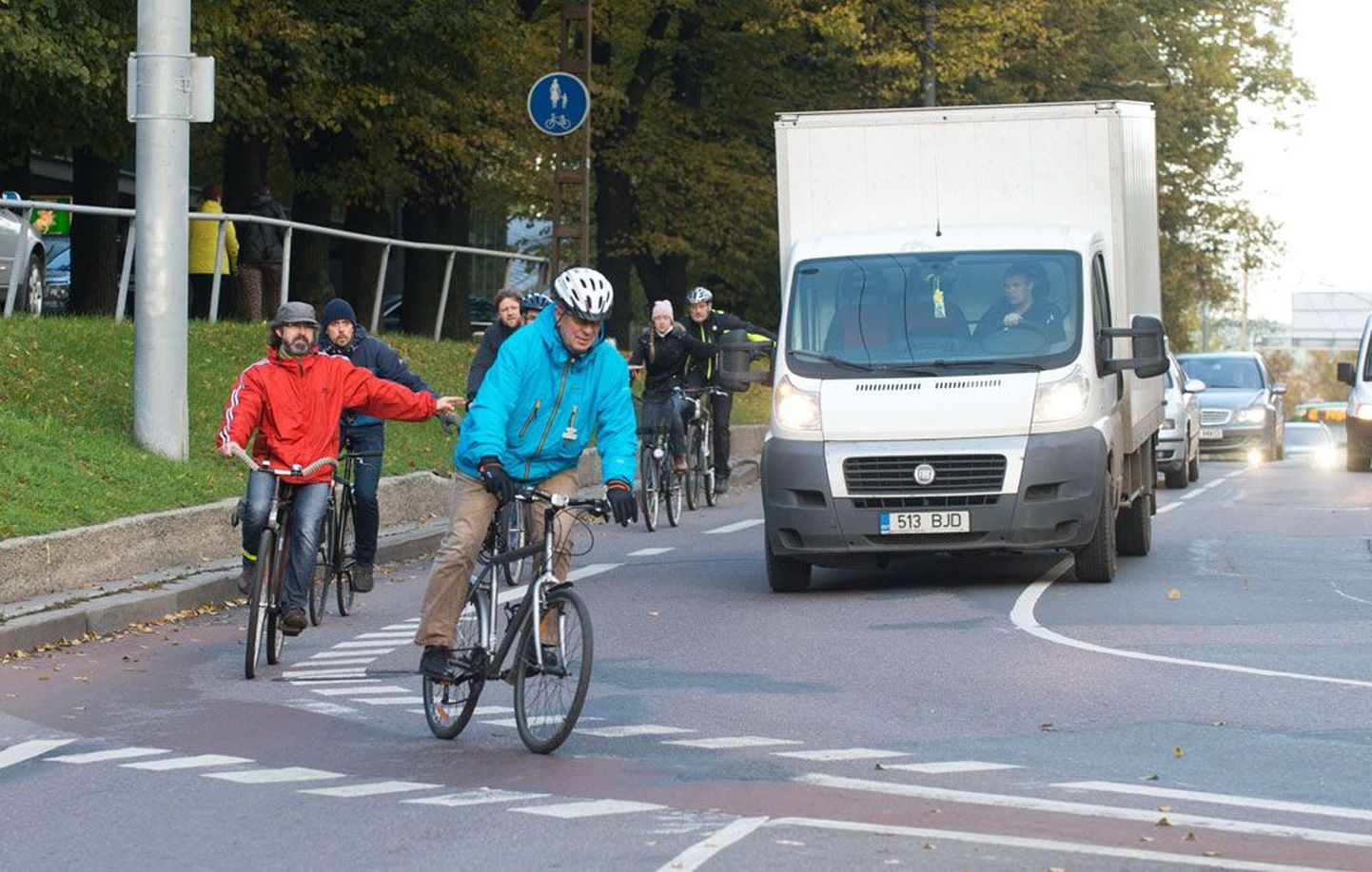Up until spring, parking was allowed around here and the driver goes by memory, not the traffic signs. And the lines drawn to point out places for the cars are still semi-visible.
Talvo Rüütelmaa expresses hopes Municipal Police will establish order and teach all to honour the rules.
Marek Rannala, Doctoral student at Tallinn University of Technology, also notes a new crosswalk lies in middle of street-side parking lot, used to enter-exit the area. Mr Rüütelmaa vows to follow through.
At the Pärnu Highway and Tõnismäe Street crossing, the bicycles hit their first major traffic flow from another direction. Spotting the long string of bikers, car drivers turn watchful and all goes okay. For a lone rider – and at peak hour – things might feel quite different...
After the Pärnu Highway viaduct, the bunch pulls over. To discuss the marking. The lines drawn vary, from continuous to dotted. Adding to the confusion, both old and new lines show at places.
Dissatisfaction is expressed at the paining crew doing their thing ere the «erasers» had time to wipe the street clean. Thanks to the climate the old lines will soon be history, the specialists see a silver lining. Senior environment expert Mari Jüssi proposes the marking be renewed in spring, not at the beginning of autumn.

